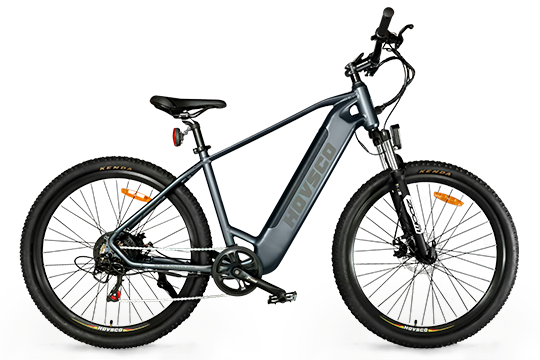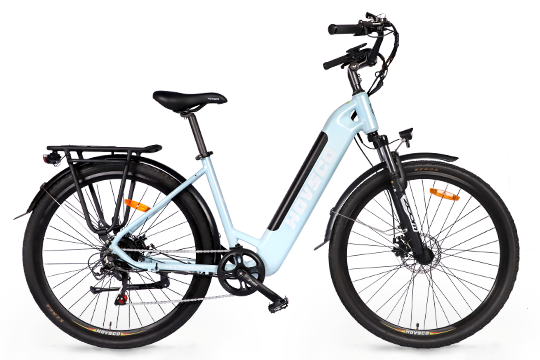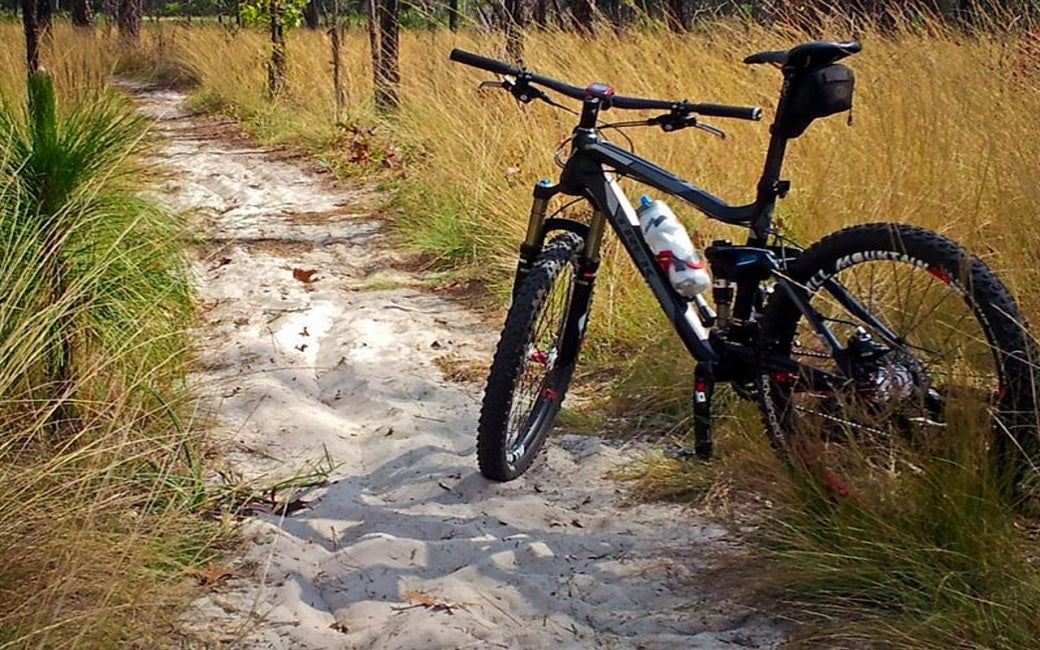11 Common Misconceptions about Electric Bikes

Electric bikes continue to grow in popularity, in fact they are predicted to boom within the next two years due to vast sales. Cheaper than cars and motorbikes, easy to charge and equipped with pedal assistance, these efficient vehicles allow you to take full control of your ride. Electric bikes are a little different from the standard bicycle, but many people seem to have picked up some false information about them. Don’t let the naysayers and e-bike haters prevent you from using pedal powered bikes to revolutionize your daily routine.
Here are the most common myths you shouldn’t fall for when considering an e-bike purchase:
Myth #1: “E-bikes are only for seniors.”
Although seniors will get many benefits out of e-bike ownership, those same benefits are just as relevant to younger riders. In fact, younger riders are making up more and more of the e-bike market because many of the reasons to own an e-bike are relevant to younger generations specifically. Lots of younger riders enjoy expressing their values such as being environmentally conscious, budget-friendly and having a convenient way to commute without the added stress of car ownership and maintenance. Ebicycles.com expects that we will see 130 million new e-bikes sold worldwide from 2020-2023, and 30% of them are big wheel bikes. With this increase in popularity, you will see more and more people of all ages riding e-bikes.
Myth #2: “You cannot get fit on an e-bike.”
The increase in heart rate and calories burned are clear proof that E-bikes are absolutely not ‘cheating’, but this remains one of the most pervasive electric bike myths. E-bikes offer people the opportunity to improve their physical health without the dread that comes with riding a traditional bike. According to Treehugger.com, e-bike riders increased their miles per day from 1.3 miles to 5.7 when making the switch to electric. E-bike riders are also better able to incorporate more consistent work-outs into their lifestyle, allowing them to make a healthy choice while commuting or tackling weekly chores. Will riding an electric bike get you totally ripped? Probably not.. But, it will help you burn significant calories (and drop some pounds) all while having a blast.
Myth #3: “You cannot ride e-bikes in the rain or snow.”
Electric bikes are becoming incredibly popular in the UK, so not being able to ride them in the rain would mean they would be useless over here! Thankfully, this is another very common myth, and these bikes are perfectly safe to ride in the wet. All of the electrical parts are protected in a waterproof housing, so you do not need to worry about them. It is perfectly safe to ride your folding e-bike in the rain, snow, and sleet. Just don’t try and use it as a canoe and you’ll probably be fine.
Myth #4: “E-bikes are noisy.”
Another e-bike myth is that e-bikes are noisy. But unlike loud motorcycles and mopeds, electric bicycles are almost silent. Regardless of if you are riding in pedal-assist mode or throttle mode, the electrical system of the bike only supports you as needed, and the sound is hardly noticeable. Thanks to new product technologies, the throttles in many e-bikes these days are incredibly quiet. The system consists of a hub motor, battery, and controller, none of which contribute to any meaningful noise. With an electric bike, your neighbors won’t be disturbed, and you’ll be able to hear any approaching vehicles for your safety.
Myth #5: “E-bikes are expensive.”
Compared to the cost of motorcycles, cars, vans and other automobiles, electric bikes will save you money rather than cost you. Many e-bikes are priced high due to containing ‘high end’ bicycle parts. The best value for money may be an electric bike with good quality components and a battery built on a relatively simple bicycle.
Think of all the things you won’t have to pay for, including petrol bills, insurance and tax. The list goes on. You can compare the electric bike with the standard car by taking a look at our infographic.
Myth #6: “E-bikes run out of power quickly.”
E-bikes run out of power quickly, and then you’re just left with a heavy bike. Not only does selecting the level of electric power you require have a bearing your long-term fitness goals, it also affects individual rides in an immediate way by limiting how far you can ride with assistance. The more power you use, the shorter the distance (range) you can cover with the electric motor contributing. On minimal power settings, though, many e-bikes are quite capable of an assisted range of 100 miles or more.
Myth #7: “Electric bikes are heavy!”
This one is only sort of true, and it’s a really subjective opinion. The short version is yes. The long version is it depends. You see, the motor and battery does indeed add some extra weight to the bike. Whether or not the extra pounds cross the border between “manageable” and “heavy” depends on you. If you find the weight of the average bike to be difficult, then yes, an electric bike will be heavy. The motor and other components add between 15 – 40 pounds, depending on the model.
It’s worth remembering, however, that the extra weight will not affect your riding of the bike by much. It is noticeable when you climb hills, but even then, if the extra weight makes the hill too much of a burden you can just engage the motor – you know, that thing that made the bike a little heavier in the first place. When it comes to carrying the bike it might be a bit of a challenge, but it’s not that big of a deal, and all the benefits of the electric motor make it worth it.
Myth #8: “E-bikes aren't safe”
Recent e-bike safety concerns, including Simon Cowel's infamous back-breaking accident, have generated tremendous media coverage, and raised valid safety questions. Pedal powered bikes are a relatively new phenomenon in the U.S. market, so safety data isn’t yet as robust as it is in other countries, but initial studies and data from other countries have concluded e-bikes are just as safe as a regular bike. There are risks associated with any activity that involve speed, a motor, traffic and varying terrain conditions. Like other transportation options, safety largely depends on how the rider is using their e-bike. To get more quick tips on e-bike safety check out our E-bike safety and security tips.
Myth 9: “E-bikes are for lazy people”
Fact: Electric bikes are designed to be 50/50 pedal assist with the rider doing half the work. Although less effort is required, the majority of riders who switch to electric bikes claim that they actually tend to cycle greater distances, thus making more use of them. E-bikescan also function as standard bicycles without pedal assistance – depending how you are feeling on the day, you can take or leave the extra help.
Myth 10: “E-bikes are the same as mopeds”
Fact: Electric bicycles have pedals and are limited to 15.5 mph under power and can be used on cycle paths. Providing a form of exercise, these factors instantly differentiate them from mopeds. Truthfully, there are probably more differences than similarities between the two. Moped users cannot travel within bicycle areas, paths or parks, whereas electric bike owners gain all the same benefits as those who ride conventional bicycles.
Myth 11: “They need a licence to ride”
Although there are a few additional requirements when it comes to eBikes, such as a limitation on the power the motor can produce and the age of the rider, they do not require a licence or insurance to ride on UK roads.
Riding an electric bike answers so many of our lifestyle needs with a relatively small investment. And, for the record, they aren’t too expensive, or too dangerous, or cheating! E-bikes not only take you pretty much everywhere you want to go, but they’re also an environmentally friendly and money-saving lifestyle change! Motor-powered, pedal assistance is an amazing way to fuel your adventures and have a blast while doing it.






Leave a comment